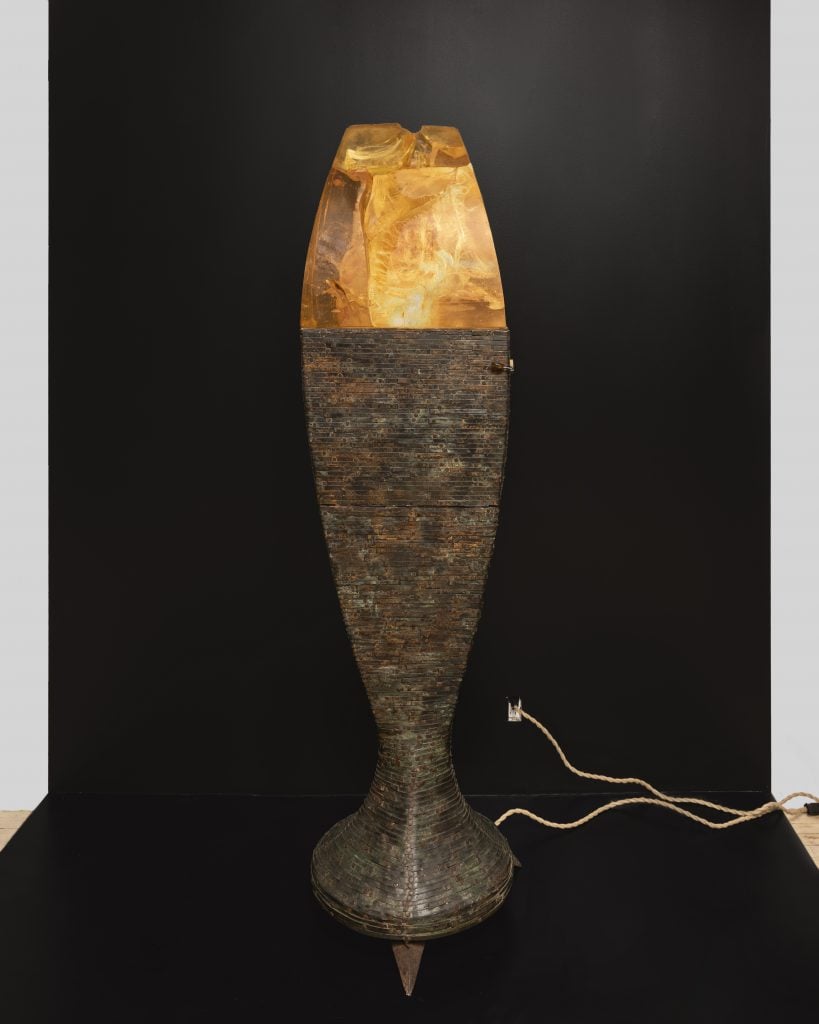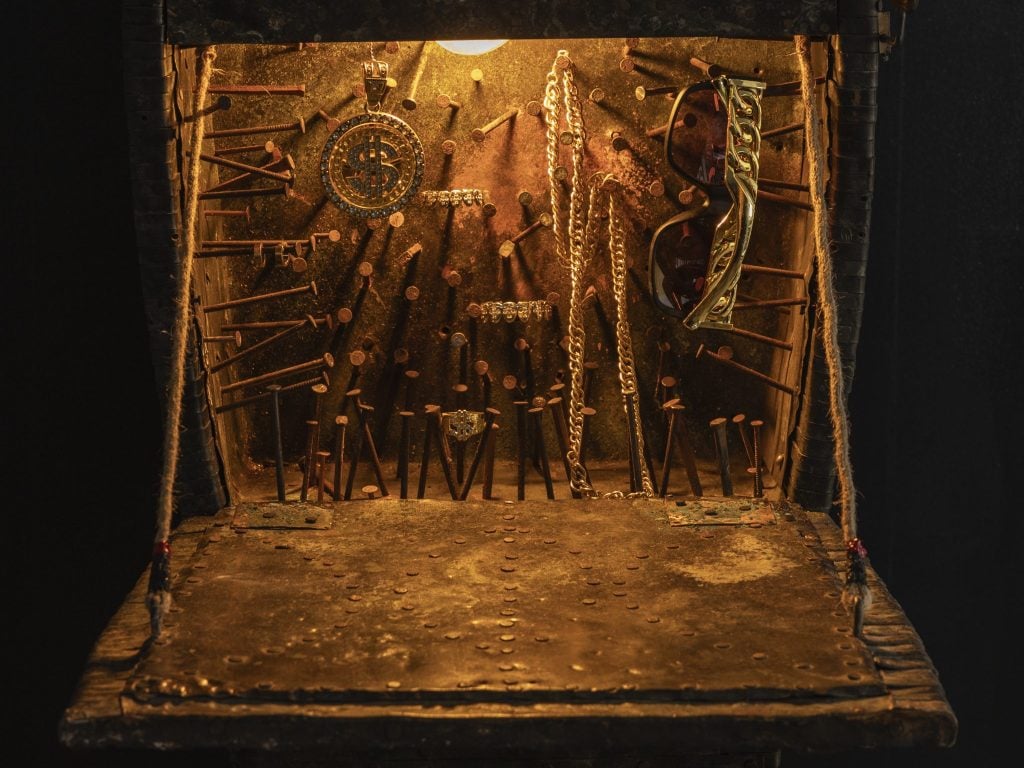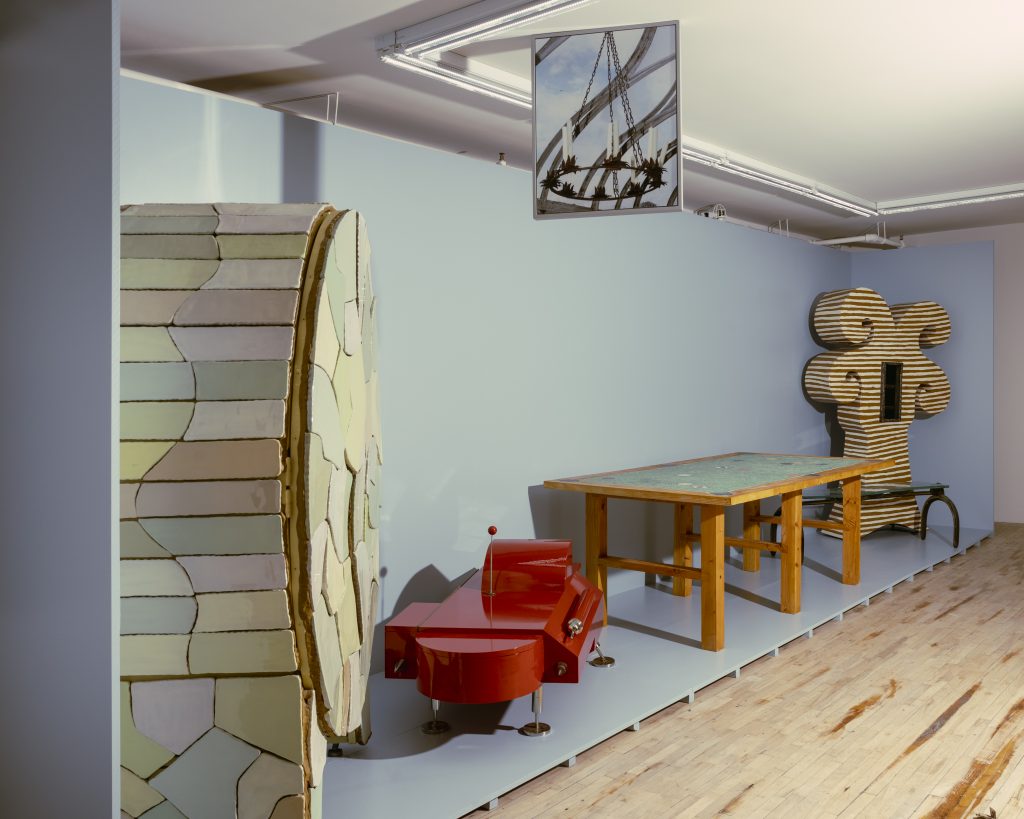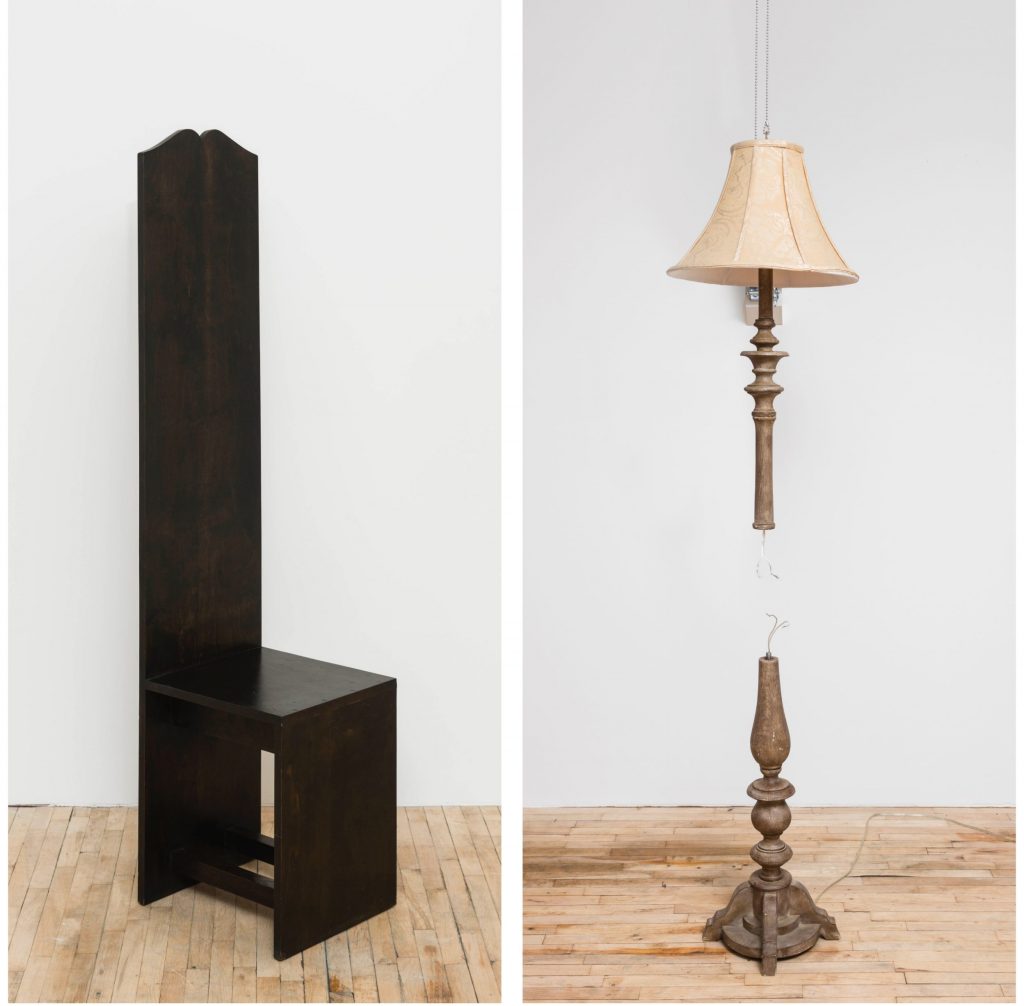Art & Exhibitions
Functional Sculpture and ‘Art Furniture’ Abound at a New Exhibition
Varying levels of functionality are on display at Superhouse's “The Odd Couple: American Art Furniture 1980-Now” in New York.

On a sweltering day at the end of June, the gallerist Stephen Markos stood in front of a rather arcane and eldritch patinated copper totem. A barely discernible African mask peered out from inside the faintly glowing, cloudy resin component that capped off its sarcophagus-like carcass.

Alex Locadia, I See You light object with jewelry box (1989). Photo: Luiz Corzo. Courtesy of Superhouse.
“He was one of the first artists to bring Afro-futurism into functional art furniture,” Markos said about Alex Locadia and his 1989 work I See You. The piece’s sepulchral qualities faded away when Markos unlatched and lowered the hidden frontispiece to reveal a compartment containing a time capsule of the era. Bargain bling (sourced from street vendors) hung from rusty nails: gold-plated fronts, sunglasses, and thick chains.
“If Blacks had come to this country as Europeans, with their culture intact, what would Black Modernism look like?” is the question the artist asked when describing this early period of his work. Part lamp, part jewelry box, the sculpture is a standout of the group exhibition “The Odd Couple: American Art Furniture 1980-Now.”

Detail of the interior of Alex Locadia’s I See You. Photo: Luiz Corzo. Courtesy of Superhouse.
The show runs until August 17 at Superhouse, the influential and quirky 6th-floor art-and-design gallery in New York’s Tribeca. It veers from austere to irreverent. Howard Meister’s black stained-wood Nocturnal Chair is imposing with its towering straight back. The late Dan Friedman’s 1989 crimson compartmented coffee table Red Car (Strategic Orbital Simulator) would have blended in well with the retro futuristic décor at Pee-Wee’s Playhouse. Ficus Interfaith is a duo that specializes in terrazzo. One can dine atop trompe l’oeil billiards on their Pool Table.

An installation view of “The Odd Couple.” Photo: Luiz Corzo. Courtesy of Superhouse.
Pippa Garner seems to be everywhere these days with work in the Whitney Biennial and a recent White Columns solo outing. “She’s having a major renaissance!” Markos said. Garner’s rather dowdy standing lamp is ingeniously bisected. The upper component connected to the wall with an industrial rig and seemingly hovers ghost-like (with exposed wires) above its lower portion.

Howard Meister, Nocturnal Chair (1980) (L) and Pippa Garner, Lampoon (1982- 2021) (R). Photo: Luiz Corzo. Courtesy of Superhouse.
“These artists are playing with different levels of functionality,” said Markos, who also founded the gallery. He has an intimate connection with all of the artists and has shown them before.
“But I’ve never brought them together in quite this way,” he said. “Some of the historical work would be considered craft, or part of the studio craft movement. Other work would be considered functional art. Both groups showed at different galleries, but they didn’t really mix all that much, even though they were making at the same time—socially either. There was a divide between craft and art. I’m using ‘art furniture’ as an umbrella term to describe all of that material.”

James Hong, Tropic of Cancer dining table (1981). Photo: Luiz Corzo. Courtesy of Superhouse.
A commonality in the offerings is it’s hard to guess a piece’s provenance by sight. Everything looks like it’s from a different era, from ancient to slightly off-kilter from its decade. The transparent Zen of James Hong’s minimal glass dining table is grounded with marine elements. The Rhode Island-based artist Elizabeth Browning Jackson utilized industrial materials, such as automotive paints, vinyl, and fiberglass in her early work. Her amorphous 1986 cherry-red Crown of Thorns vanity has moveable angular components that match its metallic legs and hide various compartments. She fabricated it a local Newport surf shop. The piece’s confluence of vectors and construction techniques exemplify the theme of “The Odd Couple.”

Elizabeth Browning Jackson, Crown of Thorns vanity, stool, hand mirror, and comb (1986). Photo: Luiz Corzo. Courtesy of Superhouse.
“I wanted to bring together what has traditionally been these three separate pillars: craft, functional art, and contemporary design,” Markos said. “They’re always shown separately. There are these divides. I want to break that down. And I wanted to show how similar they really are. How the current work that artists are making right now really has a legacy of what was happening in the eighties and nineties.”
“The Odd Couple: American Art Furniture 1980-Now” runs through August 17 at Superhouse, 120 Walker Street, 6R in New York. Open Tuesday-Saturday from 12 – 6 P.M.





